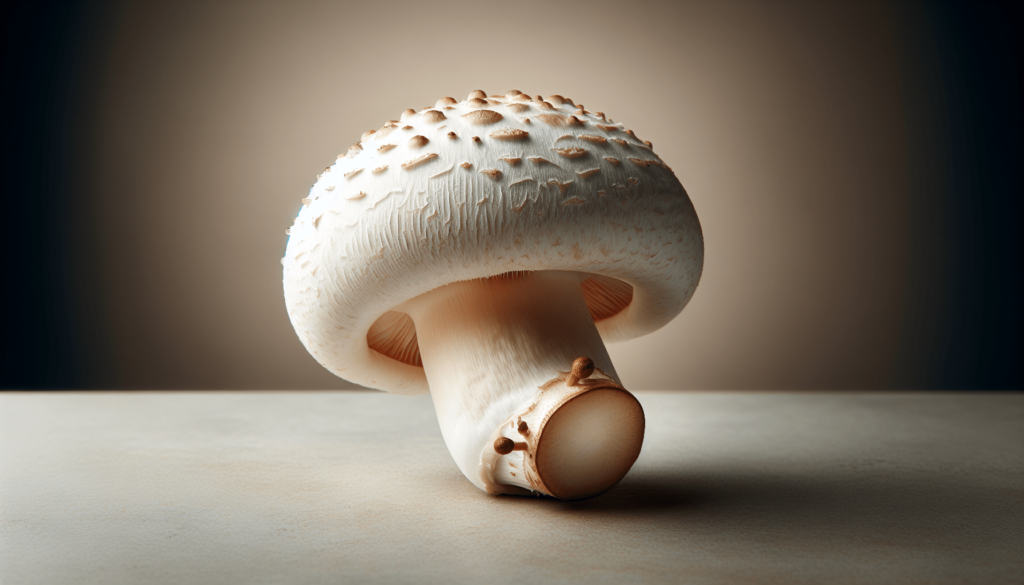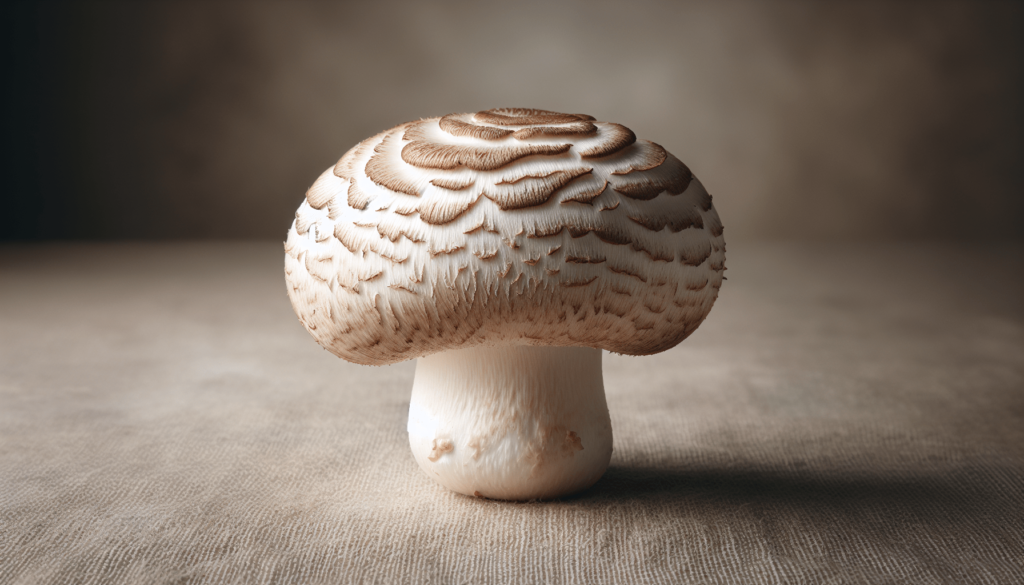Mushrooms are a bit of a mystery when it comes to categorizing them in a food group, but don’t let that intimidate you! In this article, you’ll discover that mushrooms, while often grouped with vegetables for their culinary use, are actually a type of fungi with their own unique properties. You’ll learn why they don’t quite fit into the traditional food groups and what makes them so special nutritionally. Dive in to find out where mushrooms belong in your diet and how they can benefit your health! Ever wondered, “What food group is a mushroom in?”
You’re not alone! Mushrooms often leave people puzzled because they don’t fit neatly into one of the conventional food groups. They’re not quite a vegetable, not quite a fruit, and certainly not a grain, meat, or dairy product. So where do they fit in?
What Food Group Is A Mushroom In?
Mushrooms belong to the fungi kingdom, a unique classification of living organisms that also includes yeasts and molds. But just because they are fungi doesn’t mean they don’t have a place in our culinary and nutritional world. Let’s dive deep into the intriguing world of mushrooms and see where they stand in the realm of food groups.
The Unique Kingdom of Fungi
To understand where mushrooms fit, you need to first grasp what makes them different. While most foods we consume fall into categories like plant-based or animal-based, mushrooms stand out as fungi. This is a separate kingdom of organisms that thrive in their own peculiar way. They don’t perform photosynthesis like plants do and have a unique cellular structure. Fascinating, right?
Common Food Categories
Before delving into where mushrooms fit, let’s refresh our knowledge of the basic food groups:
- Vegetables
- Fruits
- Grains
- Proteins
- Dairy
- Fats and Oils
These categories help us make balanced dietary choices. But, where does that leave mushrooms?
Nutritional Profile of Mushrooms
Understanding the nutritional makeup of mushrooms can offer some clues as to where they might fit within the food pyramid.
Macronutrients
Mushrooms are low in calories and almost fat-free, which makes them a great addition to a healthy diet. They are also low in carbohydrates but can be a source of dietary fiber.
Table: Macronutrient Composition per 100g of Common Mushroom Varieties
| Nutrient | White Button | Portobello | Shiitake |
|---|---|---|---|
| Calories | 22 kcal | 22 kcal | 34 kcal |
| Protein | 3.1g | 2.1g | 2.2g |
| Carbohydrates | 3.3g | 3.9g | 6.8g |
| Dietary Fiber | 1g | 1g | 2.5g |
| Fat | 0.3g | 0.4g | 0.5g |
Micronutrients
Mushrooms are also rich in essential vitamins and minerals. They are a good source of B vitamins, selenium, potassium, and even vitamin D when exposed to sunlight.
Table: Micronutrient Composition per 100g of Common Mushroom Varieties
| Nutrient | White Button | Portobello | Shiitake |
|---|---|---|---|
| Vitamin B2 | 0.4 mg | 0.5 mg | 0.4 mg |
| Vitamin B3 | 3.6 mg | 4.5 mg | 3.9 mg |
| Vitamin B5 | 1.5 mg | 1.9 mg | 1.5 mg |
| Selenium | 9 mcg | 25 mcg | 5 mcg |
| Potassium | 318 mg | 364 mg | 304 mg |
| Vitamin D* | 7 IU | 2 IU | 112 IU |
*Note: Values of vitamin D may vary based on exposure to UV light.

Culinary Classification of Mushrooms
When it comes to meal planning and cooking, mushrooms are often treated as vegetables. You’ll find them in the vegetable section of the grocery store, and they’re commonly included in vegetable-based dishes. In culinary terms, they bring a meaty texture and savory flavor, making them a versatile ingredient.
Mushrooms in International Cuisines
Mushrooms are prominent in diverse culinary traditions around the world:
- Asian Cuisine: Shiitake and enoki mushrooms are staples in Japanese, Chinese, and Korean dishes.
- European Cuisine: Chanterelles and porcini are often used in pasta dishes, soups, and stews.
- American Cuisine: Portobello mushrooms are frequently grilled for vegetarian burgers.
Health Benefits of Mushrooms
Besides their culinary versatility, mushrooms pack a punch when it comes to health benefits.
Immune System Boost
Mushrooms like shiitake, maitake, and reishi are known for their immune-boosting properties. They contain beta-glucans, compounds that can enhance your immune response.
Antioxidant Properties
Mushrooms are rich in antioxidants such as selenium and glutathione, which help combat oxidative stress and reduce the risk of chronic diseases.
Bone Health
Mushrooms are one of the few non-animal sources of vitamin D, crucial for maintaining bone health. When exposed to UV light, their vitamin D content increases significantly.
Weight Management
With their low-calorie, high-fiber content, mushrooms can help you feel full without contributing to weight gain.

Where Do Mushrooms Fit in the Food Pyramid?
Given their nutritional benefits and culinary uses, you might be tempted to categorize mushrooms as vegetables. But here’s the catch: because they are fungi, they don’t fit perfectly into any established category.
United States Department of Agriculture (USDA) Classification
The USDA generally includes mushrooms in the vegetable group due to their nutrient profile and usage in meals. Their dietary fiber and various vitamins make them valuable in the same way as many vegetables.
MyPlate Guidelines
According to the USDA’s MyPlate guidelines, mushrooms can be part of the vegetables portion on your plate. You can think of them as akin to other non-starchy vegetables like spinach, broccoli, and bell peppers.
Are Mushrooms A Protein Source?
You might have heard some people refer to mushrooms as a “meat substitute,” especially in vegetarian and vegan diets. While mushrooms do contain protein, their protein content is not as high as what you’ll find in legumes, nuts, or animal products.
However, they can complement a protein-rich meal well due to their texture and flavor. For example, portobello mushrooms make an excellent burger patty substitute or steak alternative.

The Versatility of Mushrooms
Mushrooms are celebrated not just for their health benefits but also for their culinary flexibility.
Cooking Methods
- Sautéing: Quick and easy, sautéed mushrooms are a tasty side dish.
- Grilling: Grilled portobello mushrooms can serve as a main course.
- Roasting: A great method to bring out their natural flavors.
- Drying: Dried mushrooms, like shiitake, have an intensified flavor and longer shelf life.
Popular Mushroom Recipes
- Creamy Mushroom Soup: A comforting and nutritious soup.
- Mushroom Risotto: An Italian classic where mushrooms shine.
- Stuffed Mushrooms: An appetizer that’s always a hit.
- Mushroom Tacos: A tasty, vegetarian twist on a favorite dish.
Mushrooms in Modern Diets
As dietary preferences evolve, mushrooms play a crucial role in various modern diets.
Vegetarian and Vegan Diets
Mushrooms add umami flavor and meaty texture to vegetarian and vegan meals, making them a popular choice in plant-based diets.
Keto and Low-Carb Diets
With their low carbohydrate content, mushrooms are suitable for keto and other low-carb diets.
Paleo and Whole30 Diets
Mushrooms fit well into paleo and Whole30 meal plans, given their natural and unprocessed nature.

FAQs About Mushrooms
Are Mushrooms Safe to Eat Raw?
While some mushrooms can be eaten raw, such as white button mushrooms, others are best cooked to neutralize any mild toxins and to enhance digestibility.
How Should Mushrooms Be Stored?
Store mushrooms in a paper bag in the refrigerator to keep them fresh for up to a week. Avoid storing them in plastic bags, as this can cause them to become slimy.
Can I Forage For Mushrooms?
Foraging can be a rewarding but risky activity. It’s essential to be 100% sure about the mushroom’s identity before consuming it, as some wild mushrooms are toxic.
Conclusion
So, what food group is a mushroom in? Technically, mushrooms are fungi and belong to their own kingdom. However, nutritionally and culinarily, they fit comfortably within the vegetable group. Whether you’re sautéing them as a side dish, grilling them for a veggie burger, or adding them to a hearty soup, mushrooms are a versatile, nutritious, and delicious addition to any diet.
Enjoy exploring the many ways you can incorporate mushrooms into your meals, and relish in the numerous health benefits they offer. Happy cooking!
And next time someone asks you, “What food group is a mushroom in?” you’ll be well-equipped to answer with confidence and perhaps even share a bit of fascinating fungus wisdom!

